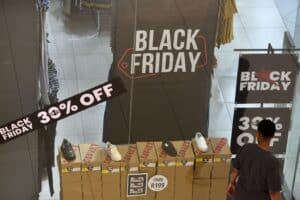South Africa surprised with its ability to meet debt obligation and improved export performance.

Despite tough global economic times, South Africa has baffled critics by earning the BBB long-term and B+ short-term rating, with a stable outlook – an average investment grade and an outlook regarded as stable for both the short- and medium-term.
According to the latest rating by Sovereign Africa Ratings (SAR), BBB represented the country’s adequate repayment capacity in terms of its ability to meet its debt obligations.
SAR said the SA sovereign rating was “underpinned by resilient macroeconomic and non-economic fundamentals”.
It said SA’s trade with major trading partners bounced back post the Covid lockdown disruptions.
These were influenced by:
- South Africa’s current account, which recorded a high surplus in March, compared to last December – attributable to improved export performance and higher commodity prices.
- The financial sector being stable, with banks holding adequate capital and the liquidity being sufficient for external obligations.
- Tax revenue improving in 2021, and in the first two quarters of 2022.
- Natural resource endowments for SA, remaining a key asset for wealth generation, resource rents and diversification of the economy.
- SA facing headwinds in terms of rising interest rates, energy adequacy and prices, as well as increasing inflation prospects.
- SA’s fiscal position being relatively weak – attributed to Covid spending in 2020 and 2021.
- Contingent liabilities – government guarantees to state-owned enterprises.
- Possible public sector wage Bill and discussions of the universal basic grant, upsetting the gains placed by government to manage and contain rising government debt.
- Environmental sustainability as captured by the “decarbonisation” just transition drive, which might affect key mining and manufacturing industries.
SAR said the SA economy grew by an estimated 4.9% in 2021 – driven by recovery in finance on the supply side and fixed investment on the demand side.
Headline inflation picked up to 4.5% in 2021, from 3.3% in 2020, on the back of higher food and transport prices and the policy rate increased to 3.75% in November 2021, from 3.5% in 2020.
The budget deficit reached a record 10% of gross domestic product (GDP) in 2020, due to additional expenditure to mitigate the impact of Covid.
“The fiscal deficit was estimated to have declined to 5.8% of GDP in 2021 – reflecting higher revenue and rationalised expenditure.
“The current account surplus was estimated at 3.8% of GDP in 2021 – from 2% in 2020, attributable to improved export performance and higher commodity prices,” said SAR.
“External reserves increased from $54.5 billion (about R976.9 billion) in July 2021, to $58.4 billion in August 2021 (about five months of import cover), boosted by the special drawing rights (SDR) allocation.”
It said SA’s total public debt was estimated to have declined marginally to 70% of GDP in 2021, from 71% of GDP in 2020, given the fiscal consolidation. “The financial sector is stable with banks holding adequate capital – 15.8% in March 2020, and 18.07% in January 2022, compared with 18.04% in December 2021 – well above the 10.5% minimum regulatory requirement.”
ALSO READ: Sovereign Africa Ratings cautions SA about high poverty rate
SAR, however, cautioned that poverty remained high – affecting 50% of the population, with the unemployment rate recorded at 35% in August. “The economy is projected to grow by 1.9% and 1.4% in 2022 and 2023 respectively, lifted by growth in trade, tourism, mining and manufacturing.
“Inflation is projected to rise to 5.8% in 2022, due to rising oil prices and likely increases in food prices – resulting from the Russia-Ukraine conflict, but to decrease to 4.6% in 2023.
“The fiscal deficit is also projected to increase to 6.2% of GDP in 2022, before falling to 5.1% of GDP in 2023, due to the consolidation measures, including higher tax revenues and a reduced wage Bill.
“The current account deficit is projected to be 1.4% of GDP in 2022, and to swing to a surplus of 0.1% in 2023, due to the recovery in export demand and expected fall in commodity prices.”
According to the National Treasury, government expects to achieve a primary surplus where revenue exceeds non-interest expenditure by 2023/24.
“The consolidated budget deficit is projected to narrow from 6% of GDP in 2022/23 to 4.2% of GDP in 2024/25.
“Gross loan debt will stabilise at 75.1% of GDP in 2024/25. Debt-service costs consume an increasing share of GDP and revenue and are expected to average R333.4 billion a year over the medium term.
“Total consolidated government spending will amount to R6.62 trillion over the next three years…”
NOW READ: New African credit rating agency to publish 1st rating of SA government Friday






